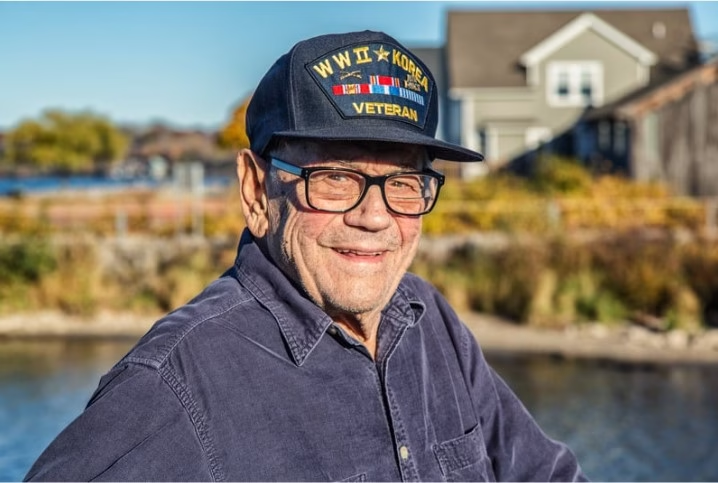When it comes to understanding veteran status, the term “Protected Veteran” often surfaces. But what does it really mean? This designation is crucial for many who have served in the military and offers a range of benefits designed to support their transition into civilian life. If you’ve ever wondered about your rights or eligibility as a veteran, you’re not alone. Let’s dive deep into what being a Protected Veteran entails and uncover everything you need to know about this important topic. Whether you’re a veteran yourself or someone looking to learn more, there’s valuable information ahead that can make a difference in lives shaped by service.
Definition of a Protected Veteran
A Protected Veteran is a designation under the Vietnam Era Veterans’ Readjustment Assistance Act (VEVRAA). This law aims to ensure that veterans who face disadvantages in employment due to their service receive protection against discrimination.
This status applies primarily to individuals who have served in the U.S. military and meet specific criteria, including those with disabilities or those who served during particular conflicts.
The goal of this classification is straightforward: create a fair job market for veterans while recognizing their unique experiences and challenges.
Being labeled as a Protected Veteran opens doors to numerous benefits, enhancing opportunities for meaningful employment. It’s designed not just as recognition but also as an essential support mechanism for veterans striving to reintegrate into civilian life effectively.
Types of Protected Veterans
Protected veteran status includes several classifications, each with unique criteria. The most recognized types are disabled veterans, recently separated veterans, and active duty wartime or campaign badge veterans.
Disabled veterans have service-related disabilities that affect their daily lives. This classification ensures they receive necessary accommodations in the workplace.
Recently separated veterans include those who left military service within the past three years. They often face challenges transitioning to civilian life and benefit from additional protections during this period.
Active duty wartime or campaign badge veterans served in specific conflicts or received certain awards for their service. Their contributions during designated periods hold great significance and warrant special recognition in employment settings.
Each type of protected veteran has distinct rights under federal law, ensuring fair treatment and equal opportunities in various environments. Understanding these categories can empower both employers and employees alike.
Importance of Protected Veteran status
The importance of Protected Veteran status cannot be overstated. It recognizes the sacrifices made by those who have served in the military. This acknowledgment fosters a sense of respect and appreciation within society.
Protected Veteran status also plays a crucial role in combating discrimination in employment. By offering legal protections, it ensures that veterans are treated fairly during hiring processes and throughout their careers. Employers are encouraged to consider the unique skills and experiences these individuals bring.
Furthermore, this status can lead to greater access to resources tailored specifically for veterans. From job training programs to counseling services, Protected Veterans often find support systems designed to help them transition successfully into civilian life.
Recognizing and upholding Protected Veteran status benefits not only the individual but also enriches organizations with diverse perspectives shaped by military experience.
Employment benefits for Protected Veterans
Protected Veterans enjoy a range of employment benefits designed to enhance their job opportunities and workplace experiences. These advantages stem from legal protections that aim to prevent discrimination based on military service.
One significant benefit is the ability to access special hiring preferences in federal jobs. Many government agencies prioritize applications from protected veterans, giving them a competitive edge over other candidates.
Additionally, organizations may offer training programs tailored for veterans. This helps smooth the transition into civilian careers while leveraging their unique skill sets gained during service.
Employers often provide accommodations for disabilities related to military service as well. Such support fosters an inclusive work environment where all employees can thrive.
Moreover, many companies participate in veteran-friendly initiatives that promote networking and mentorship opportunities specifically aimed at helping protected veterans advance in their careers.
How to Determine if You are Eligible for Protection
Determining your eligibility for protected veteran status starts with understanding the criteria set forth by the U.S. Department of Labor. It’s essential to know if you have served in the active military, naval, or air service. Next, consider whether your discharge was under conditions other than dishonorable. This can significantly impact your eligibility status.
You should also verify if you meet specific time frames of service and any additional qualifications related to disability or receipt of certain awards. Documentation plays a crucial role here. Gather relevant military records that detail your service history and discharge information.
If you’re unsure about navigating this process alone, consider reaching out to veteran support organizations. They often provide valuable resources and guidance tailored for veterans seeking help with their status determination.
Resources and Support for Protected Veterans
Protected veterans have access to a variety of resources designed to support their unique needs. Organizations like the U.S. Department of Veterans Affairs (VA) offer counseling, educational benefits, and job training programs tailored specifically for veterans.
Additionally, non-profit organizations such as the Disabled American Veterans (DAV) provide assistance with claims and advocacy services. They help navigate the complexities of VA benefits that can seem overwhelming at times.
Local community groups often host events aimed at connecting veterans with employers who prioritize hiring protected status individuals. These networking opportunities are invaluable for career advancement.
Online resources also play a crucial role in providing information about rights and protections under laws like VEVRAA (Vietnam Era Veterans’ Readjustment Assistance Act). Websites dedicated to veteran affairs can be excellent starting points for finding useful tools and guidance.
Veterans should not hesitate to reach out for support; numerous channels exist to ensure they receive the help needed throughout their transition into civilian life.
Conclusion
Understanding the status of a protected veteran is crucial for both veterans and employers. It provides essential protections against discrimination in employment, ensuring that those who have served our country can compete fairly in the job market. Knowing the types of protected veterans helps clarify which service members qualify for these safeguards. Employment benefits available to protected veterans offer significant support as they transition back into civilian life. These benefits play a vital role in helping them reintegrate successfully while also recognizing their sacrifices.
Determining eligibility for protection requires attention to specific criteria set by law. Utilizing available resources and support networks can help navigate this process more effectively. By staying informed about what it means to be a protected veteran, individuals can better advocate for themselves and understand the rights afforded to them under federal regulations. This knowledge empowers not only veterans but also employers looking to create an inclusive workplace environment that values the contributions of those who have served.

